Where Labor got ‘slaughtered’, regions lurch right, a teal wave: Deciphering Victoria’s council results
By Tom Cowie and Rachael Dexter
The local government elections are done and dusted. After several weeks of voting and another few weeks of counting, Victoria now has 78 newly elected councils.
We’ve combed through the data for trends to emerge out of the results, from the political and gender make-up to federal implications and regional shifts.
Everyone’s an ‘independent’
It’s a challenge figuring out each council’s political composition, as candidates aren’t required to publicly disclose their affiliation. In state and federal elections, it is a legal requirement.
The Age checked the public record and used other sources to establish the major party political affiliations of as many metropolitan Melbourne councillors as possible.
Of the 299 metropolitan councillors who got elected, we found that at least 23 are Greens members (7.7 per cent), 70 Labor members (23 per cent) and 30 are Liberal members (10 per cent).
That means more than half of Melbourne’s elected councillors (58 per cent) are either independents, or their links to a major registered party are not known.
The most Labor-dominated councils in Melbourne are Hume (63 per cent), Monash (63 per cent), Melton (55 per cent), Darebin and Dandenong (54 per cent).
Labor only openly endorsed candidates – allowing them to use the party logo and resources – in seven councils: Darebin, Melbourne, Merri-bek, Moonee Valley, Port Phillip, Whittlesea and Yarra.
The Greens openly endorse all their candidates and now have their highest presence on Merri-bek (44 per cent), followed by Maribyrnong (42 per cent), Darebin (33 per cent), Yarra and Banyule (both 22 per cent).
There was only one endorsed Liberal candidate at these elections: Owen Guest, who won a spot on the City of Melbourne. However, known Liberals were most prominent in Manningham (55 per cent), Bayside (43 per cent) and Nillumbik (28 or per cent).
Labor has some worries
It can be a fraught business trying to extrapolate council results into other elections. Political concerns differ between each level of government and voting doesn’t always carry over.
Despite this, the parties still pay close attention to the results to see if there is a mood for change in a particular area.
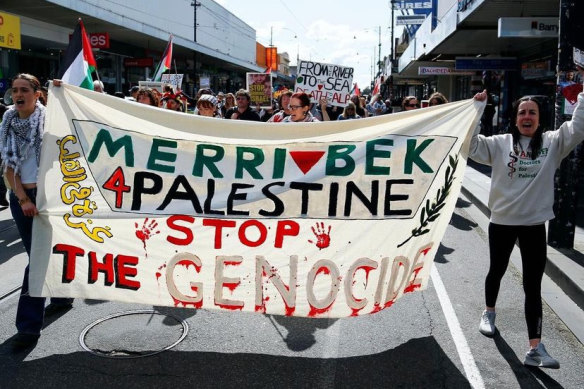
Pro-Palestine protesters in Merri-bek outside the Coburg office of Labor MP Peter Khalil.Credit: Instagram
In Merri-bek, in Melbourne’s northern suburbs – including Brunswick, Coburg, Pascoe Vale – a strong performance from the Greens suggests federal Labor MP for Wills Peter Khalil has a fight on his hands to retain a seat once held by party legend and former prime minister Bob Hawke.
The Greens won all four wards south of Moreland Road in Brunswick, while two other councillors are an ex-Green independent and member of the Socialist Alliance. Labor holds three spots in the northern end of the municipality.
The boundaries for Wills and Merri-bek are very closely aligned – and Khalil has faced intense local opposition on the Labor government’s response to the conflict in Gaza.
In Darebin, however, the news was better for Labor – and Cooper MP Ged Kearney – which will hold a majority on council after increasing its numbers from one to five.
“The Greens had a bad day out there,” said former Labor strategist and RedBridge pollster Kos Samaras.
“That part of Melbourne is becoming less and less favourable to the Greens.”
But for all the focus on the inner city, Samaras said the council with the most federal significance was Whittlesea, in Melbourne’s outer north.
In an unusual move, Labor endorsed a field of 10 candidates in the council – with only four successful running under the Labor banner.
“The brand got tested and it got slaughtered,” he said.
Whittlesea was the kind of outer suburban area where Labor was under pressure at a state and federal level, Samaras said.
While the southern part of Whittlesea is safe Labor territory in Scullin, the northern section is in McEwan – a marginal seat taking in the mortgage belt growth suburbs that Liberal leader Peter Dutton will be targeting.
“Whittlesea is a window into the other trend – Labor is in serious trouble in the outer suburbs,” Samaras said.
Teal wave hits
Melbourne’s inner east is another area being closely watched since teal MP Monique Ryan won the federal seat of Kooyong from Liberal Josh Frydenberg in 2022.
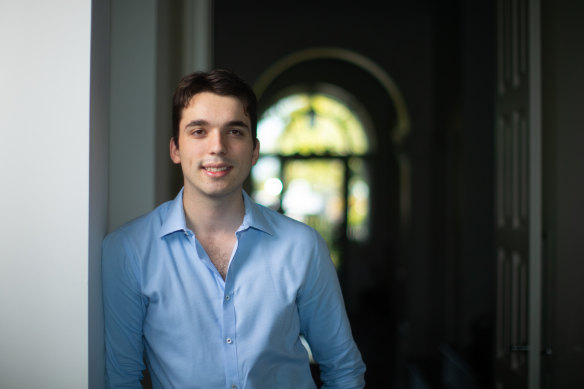
Rob Baillieu, son of former Victorian Liberal premier Ted Baillieu.Credit: Simon Schluter
The council election results in Boroondara show local sentiment still appears to be with environmentally minded independents.
The Liberals were wiped out in Boroondara, dropping from a majority to just one member on council. The rest are progressive independents and Greens.
Rob Baillieu, son of ex-premier Ted and Ryan’s volunteer campaign manager in 2022, also won Riversdale ward.
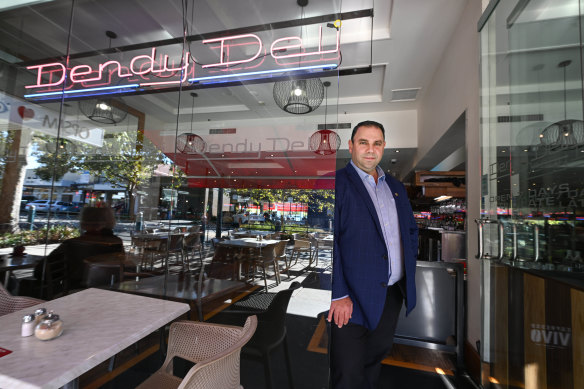
Hanna El Mouallem is the sole remaining Bayside councillor.Credit: Joe Armao
Ben Raue, political analyst and founder of The Tally Room blog, said he didn’t see the left-leaning trend in Boroondara and nearby Stonnington reversing.
“Those areas [overlap with] Higgins and Kooyong, and state seats which have just been getting weaker for the Liberal Party for a long time and it just keeps happening,” he said.
The news was better for the Liberals in Bayside, which sits entirely within the electorate of Goldstein, held by another independent MP, Zoe Daniel. The area has been the site of protests over state government plans for increased density.
Four out of the seven councillors are members of or have links to the Liberal party. Federal Liberal candidate Tim Wilson will hope it bodes well for his chances.
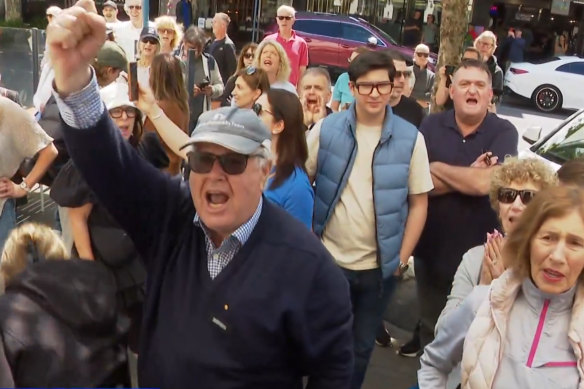
Bayside residents protest outside a recent press conference by Premier Jacinta Allan.Credit: Nine News
Brighton state Liberal MP James Newbury is in favour of divining trends from council results.
Even if they didn’t pick Liberals, voters were responding to a conservative message of “back to basics” policies, he said.
“The political class don’t look closely enough at council election results,” he said. “The recent elections show much alignment to state and federal polling and the shift away from the left.”
A frequent theme from many conservative candidates was an emphasis on “back to basics” or a shift away from “woke” social issues.
Shifting winds in the regions
There’s been a conservative political shift in Geelong and Ballarat – major regional centres that have Labor state and federal MPs. The City of Greater Geelong now has five councillors of 11 that are either Liberal members or have links to the party.
Chris Burson from the Angry Victorians Party was also elected to You Yangs ward, while independent Eddy Kontelj is the brother of Liberal Stretch Kontelj. The Greens have no presence after winning a spot in 2020, while Labor held on to its single seat.
“There has definitely been a swing to the right,” said councillor Emma Sinclair, a former member of Fiona Patten’s Reason Party and one of a few progressives elected in Geelong.
“But I think what we’re also seeing here is the impact of shifting to single councillor wards. We’ve said all along that it would be bad for diversity and that’s played out in this election.”
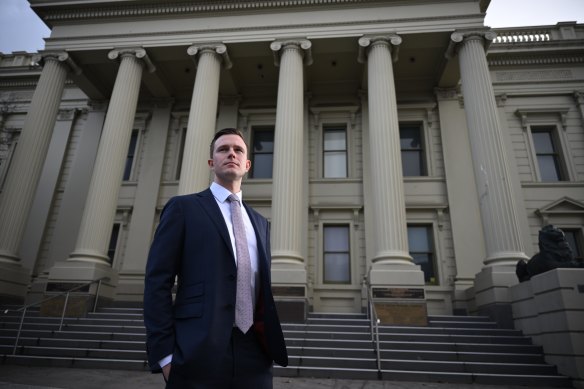
Liberal Trent Sullivan will be part of a conservative council in Geelong.Credit: Eddie Jim
In Ballarat, the council will include at least six people who could be considered on the right side of politics and three from the left. Three current or former Liberals are joined by three councillors with links to the United Australia Party, Liberal Democrats and Nationals. Another three are from Labor.
Gender split remains stubborn
Victoria has failed to achieve the state government’s goal of a 50-50 gender split for councillors by 2025.
Analysis by the Victorian Local Governance Association shows that the number of female councillors is stuck at 43 per cent – the same as the 2020 election. Only a third of regional councillors are female.
“It’s a regional issue, highlighting how many more challenges and barriers there are in place for rural and regional women to stand for council and get elected,” says Ruth McGowan, a councillor coach and former mayor.
There are seven councils that McGowan terms as “fragile”, with only one female councillor: Alpine, Gannawarre, Hindmarsh, Loddon, Swan Hill, Towong and Yarra Ranges.
Victoria no longer has any men-only councils – the previously male-dominated Mansfield has elected two female councillors.
In Greater Melbourne, there is almost an exact 50/50 split. Of the 299 councillors in Melbourne’s 31 council areas, 147 are male and 152 female.
Brimbank in Melbourne’s west has the most women, with 81 per cent. The next top four are Glen Eira, Darebin, Maribyrnong and Hobsons Bay.
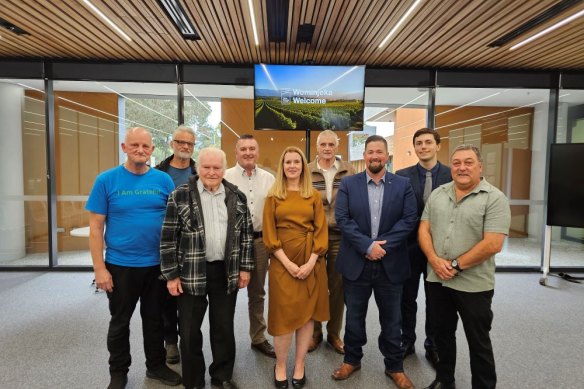
The newly elected Yarra Ranges Shire councillor group includes: Tim Heenan, Peter Mcilwain, Len Cox, Jeff Marriott, Fiona McAllister, Jim Child, Gareth Ward, Mitch Mazzarella and Richard Higgins. Credit: Yarra Ranges Shire Council
At the other end of the scale, Yarra Ranges has elected eight men and one woman. The other councils with the highest number of men are Whittlesea, Whitehorse, Mornington and City of Melbourne.
A statistical turnout fluke
Despite the obvious integrity risks of postal voting – evidenced this week with allegations of vote tampering in Knox and Whittlesea council elections – participation in the elections was high.
In an odd data fluke, the statewide turnout figure for the council elections this year was exactly the same as the 2020 vote: 81.47 per cent.
Turnout reached an all-time high in 2020, while Victoria was in lockdown, and the VEC did have early concerns that wouldn’t be replicated again.
Queenscliffe Borough Council showed the highest turnout with 89 per cent of those enrolled voting, while turnout was lowest in the City of Melbourne – which has a different electoral roll that includes businesses – at 68 per cent.
Port Phillip and Yarra councils in inner Melbourne were also at the bottom of the list for turn out (72-73 per cent).
One data point that has caught the eye of the Victorian Greens and pro-housing density advocacy group YIMBY Melbourne is a seemingly strong correlation between low turnout and areas where renters are most common.
YIMBY Melbourne lead organiser Jonathan O’Brien said the correlation did not surprise him.
“It aligns pretty well with the democratic disenfranchisement that renters face across councils,” he said.
Get alerts on breaking news as happens. Sign up for our Breaking News Alert.
correction
An earlier version of this story incorrectly stated there were three of 10 endorsed Labor candidates elected to Whittlesea council. It has been updated to say there were four endorsed Labor councillors elected.